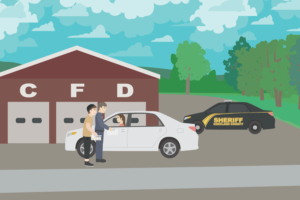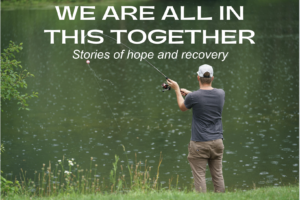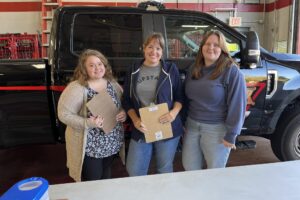Cortland County Agencies and Volunteers Take Part in National Fentanyl Awareness Day on May 9
Cortland community members are joining a broad coalition of nonprofit organizations, corporations, government agencies and schools to support the second annual National Fentanyl Awareness Day on May 9, 2023. The day of action is designed to raise awareness about illicit fentanyl in the illicit drug supply. Fentanyl is a synthetic opioid which is 50 times stronger than heroin and 100 times stronger than morphine. Pharmaceutical-grade fentanyl is used in medical settings to help relieve pain, but fentanyl is also manufactured illicitly. Contamination of street drugs with illegally made fentanyl is the primary driver of the recent increase in overdose deaths.
Community partners will be set up to table throughout Cortland, providing Narcan training, fentanyl test strips, and information about safer use and local resources. See below for the schedule and locations.
THE CALL TO ACTION
The call to action for National Fentanyl Awareness Day is simple: spread the word! Please help us increase knowledge about and access to resources like fentanyl test strips, naloxone, and safe use practices (like the Never Use Alone hotline or Brave App). Supporters are invited to share information on social media and through other channels and use the campaign hashtag #NationalFentanylAwarenessDay. Learn more about the awareness effort at https://www.fentanylawarenessday.org. Follow the Healing Cortland Facebook Page for more updates and information about local resources.
The date for the awareness effort was purposely set during Mental Health Awareness Month to amplify the warning message about self-medication at a time when counterfeit pills have flooded the online and street drug markets.
UNCERTAINTY DRIVES FENTANYL DEATHS
Locally and nationally, people continue to find unexpected fentanyl contaminating their illicit drug supply. Members of our community think that they know what they’re using, but more and more often, they’re also using fentanyl without choosing to. Fentanyl has been detected in the heroin supply, as well as in counterfeit prescription pills and in cocaine. We are trying to spread the word about the risks of unexpected fentanyl contamination and concrete ways that people can protect themselves and their loved ones. Never use alone (an in-person or virtual friend could save your life), always test your drugs with fentanyl test strips, go slow, use less, and have naloxone on hand.
According to CDC provisional data, there have been 70,000 deaths involving illicit fentanyl in the twelve-month period ending November 2021. Data show that fentanyl was involved in more deaths of Americans under 50 than any cause of death, including heart disease, cancer, suicide, homicide, other accidents, and illnesses. In Cortland County, almost all 2021 opioid overdose deaths involved fentanyl.
XYLAZINE: AN EMERGING CONCERN
Local and national data indicate an increasing presence of xylazine mixed with illicit opioids. Xylazine is a non-opioid veterinary tranquilizer. We don’t know exactly how common xylazine is in the Cortland area, but it has shown up in local toxicology reports. Xylazine has been associated with severe skin wounds, which spread and worsen quickly. These wounds are seen regardless of how people use (smoking, snorting, or injecting). It’s very difficult for these wounds to heal on their own so it’s important to get medical attention if you have one.
When xylazine is mixed with other drugs (fentanyl, heroin, or benzos), the chance of overdose increases. Narcan doesn’t work on xylazine, but will help if the heroin/fentanyl is making it hard to breathe.
Administer naloxone like normal if you think someone is overdosing. If the person starts breathing again but is still sedated, they don’t need more naloxone (look for at least 10 breaths each per minute). Put them in the rescue position and keep an eye on them.
New York State’s Office of Addiction Services and Supports (OASAS) has put out a guidance document which includes practical harm reduction strategies, information on care for xylazine-related wounds, as well as some of the history.
UNITING AROUND AWARENESS
Anyone who uses drugs can overdose. That includes people who use prescription opioids (as prescribed or not), and people who use illicit drugs (even if they don’t think they’re using opioids, even if their substance use isn’t problematic).
Knowledge is key. On May 9, the National Fentanyl Awareness Day events will spread potentially lifesaving information–like how to use test strips and Narcan, resources like the Never Use Alone line or Brave App, and about common street drug contaminants–to our community.
For more information, contact Aster Parrott, the Healing Cortland Community Engagement Coordinator at (607) 218-5488 (call or text).
Involved agencies include CACTC, the Southern Tier AIDS Program, Family & Children’s Counseling Services, Catholic Charities of Cortland County, Access to Independence of Cortland County, Cortland County Health Department, the Central Region Addiction Resource Center and more!





